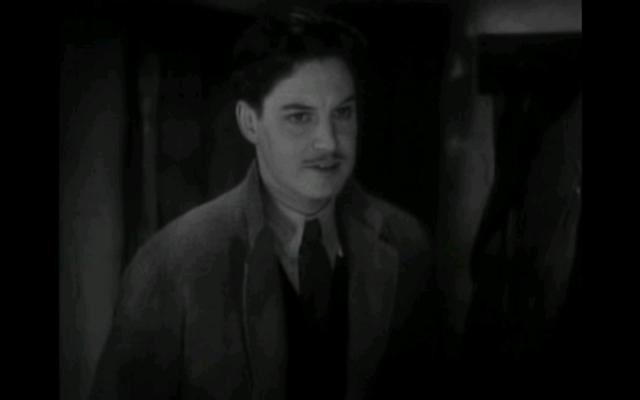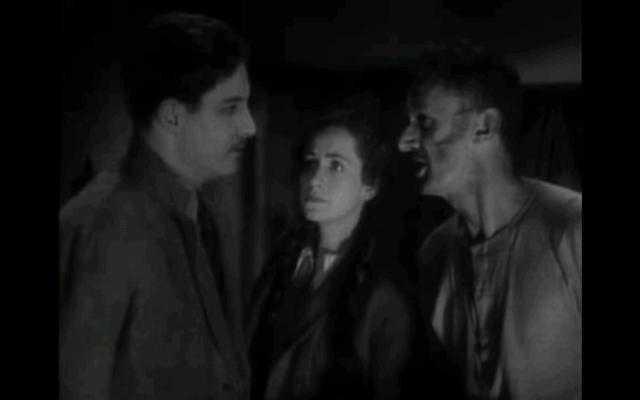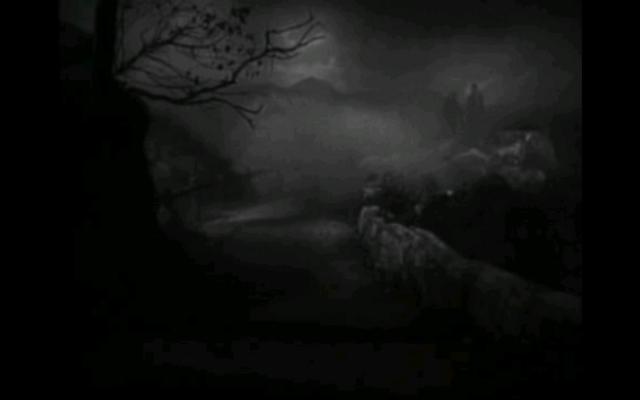39 Steps, The (1935)
“There are twenty million women in this island and I get to be chained to you.”
|
Synopsis: |
|
Genres, Themes, Actors, and Directors:
Response to Peary’s Review: Hitchcock’s greatest triumph, as usual, is his ability to effectively mix suspense with both humor and sexual tension. His “accidental” handcuffing of stars Donat and Carroll (the first of his “icy blondes”) for an entire afternoon has gone down in the annals of film history, and apparently worked like the blazes, given that their chemistry together perfectly reflects both annoyance and (eventually) sexual attraction. (On that note, Peary argues that none of the females in the film are “allowed their needed sexual release with Donat” — but I don’t quite buy this as a “theme” of the film.) What is clear, however (as noted in Tim Dirk’s “Greatest Films” review) is Hitchcock’s treatment of marriage as a stifling, dissatisfying convention — first in Donat’s humorous encounter with a milkman who refuses to believe there’s been a murder committed in Donat’s apartment but readily accepts that Donat has cheated on his wife, and later in his more tragic interactions with a browbeaten farm wife (Peggy Ashcroft) and her domineering husband (John Laurie). Much of the credit for the film’s success should go to its screenwriters (Charles Bennett and Hitchcock’s uncredited wife, Alma Reville), who stuff the story “full of great characters and memorable sequences”, and keep the narrative moving at an appropriately delirious pace. Donat literally jumps from one close-call to another, and we marvel at both his ingenuity (he pretends to be a guest speaker for an indeterminate political club and boldly ad-libs a well-received speech) and his luck (a carefully placed book saves him from death by gunfire). Watch for evidence of Hitchcock’s “special touches” throughout — including a perfectly timed shot in which a train whistle goes off while a woman opens her mouth to scream. Redeeming Qualities and Moments:
Must See? Categories
(Listed in 1001 Movies You Must See Before You Die) Links: |








One thought on “39 Steps, The (1935)”
Very much a must – one of Hitch’s perfectly realized films.
‘The 39 Steps’ is an ingenious blend of script, acting and direction. However, it’s also a unique instance in which, in spite of the fact that the story’s construction is so clever and thorough, the specifics of the plot seem to not really matter. In spite of what he has to do and where he has to go to do it, Donat’s actions can be seen as clearly secondary to Hitch’s intent…which is just to keep his audience unbalanced in entertainment, as if saying “It can be fun being completely unnerved.”
Hitchcock presents a question mark at the beginning of each sequence and things unravel from there. This is established in the opening scene, in which audience members on-screen are asked to put forth difficult or obscure questions to a stage performer, Mr. Memory. Significantly, Donat here offers a question regarding a distance between places in Canada, thus setting up for us his own eventual journey of many miles.
To keep things unsettling for us, the story exploits the idea of the undoing of refuge. Early on, Mannheim believes she finds it (while constantly doubting that’s the case) – then Donat takes her place as the one who discovers that there is no safe haven anywhere. That makes for some surprising turns indeed.
This is a Hitchcock film that I genuinely admire; all of its elements work cohesively and its entertainment value is assured. There is also welcome humor strategically placed throughout.
The performances are uniformly effective. Donat is perfectly cast for wit, intelligence and flair, and Carroll complements him quite well. It’s rather unimportant whether sexual attraction develops between them or not; they bristle together suitably and believably. Though it’s a bit erotic when Carroll takes off her stockings while being handcuffed to Donat – and the back of his hand brushes against her legs. (I also, by the way, rather like Ashcroft’s subtle underplaying as the “browbeaten farm wife”. She manages to do a lot while being allowed to do little.)